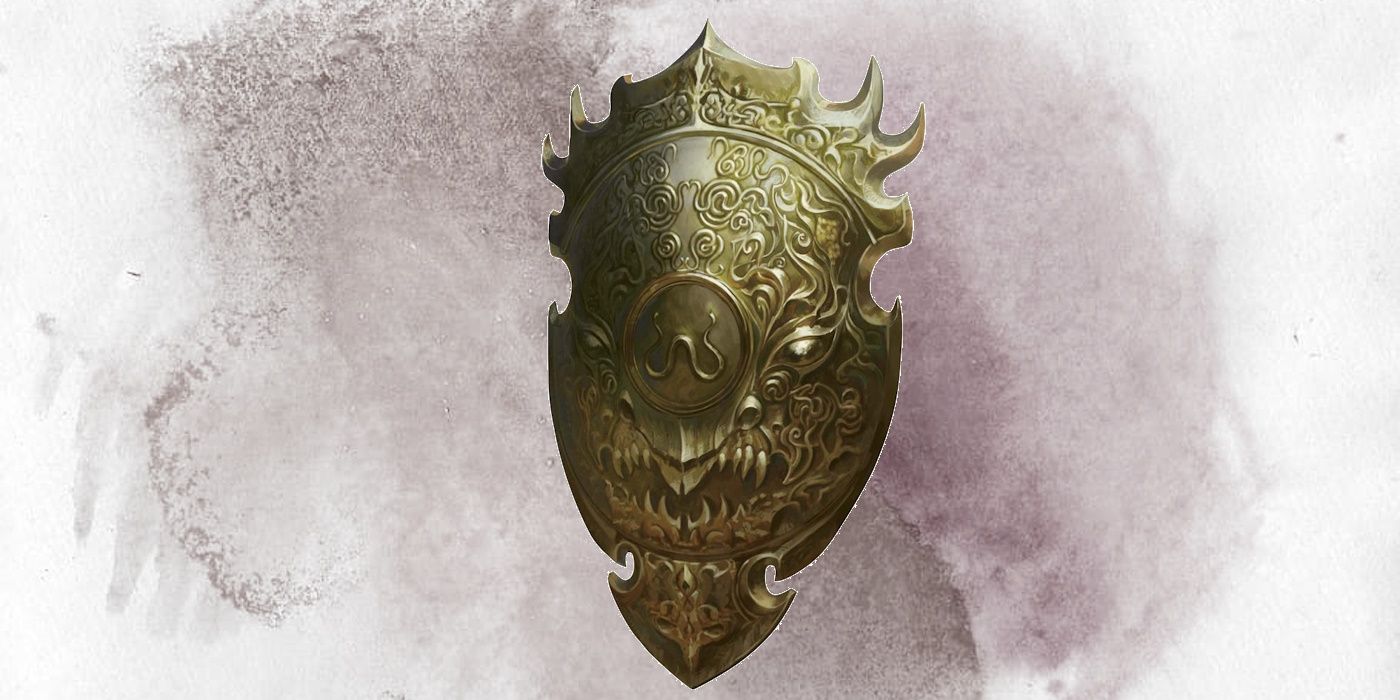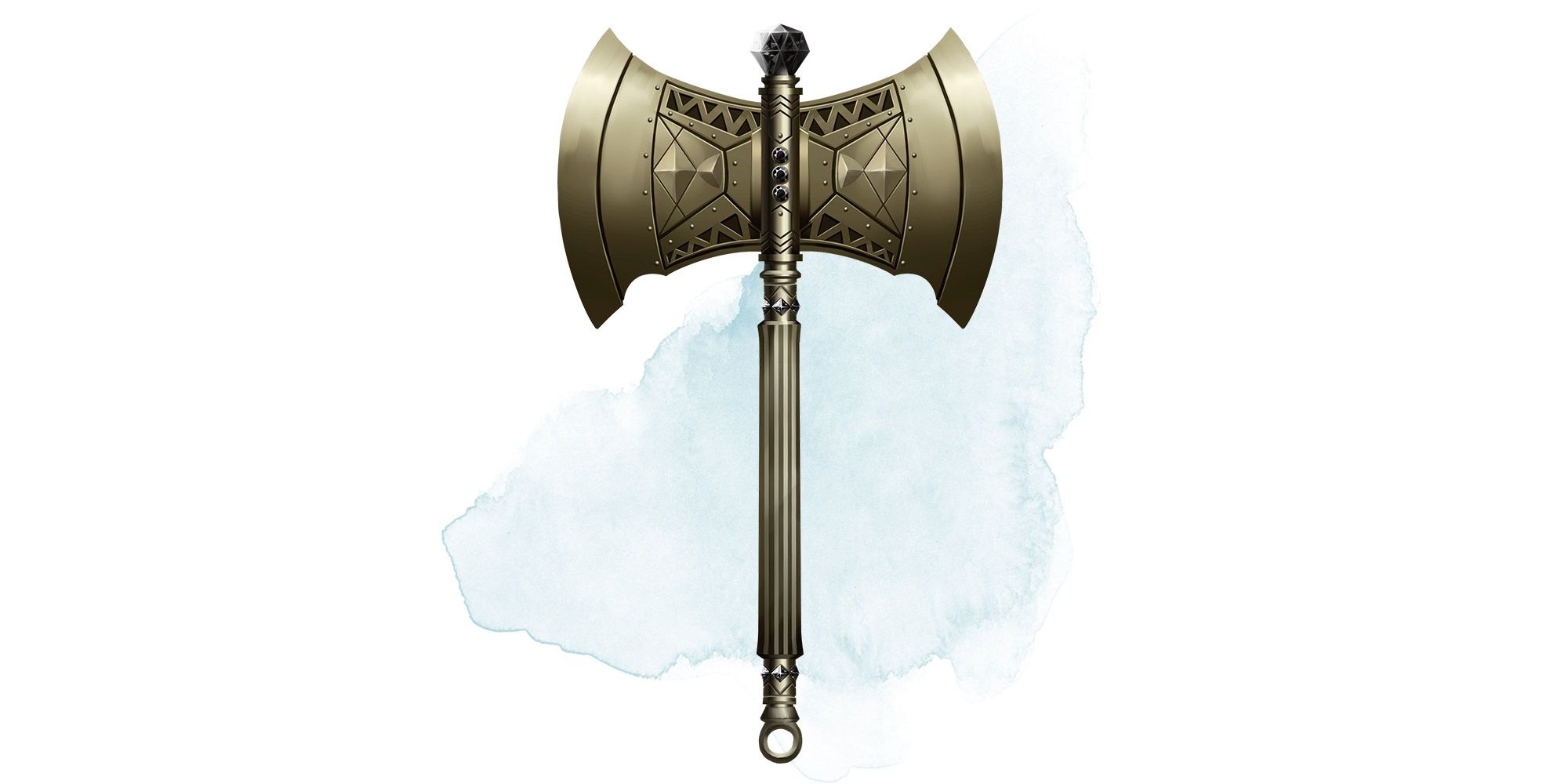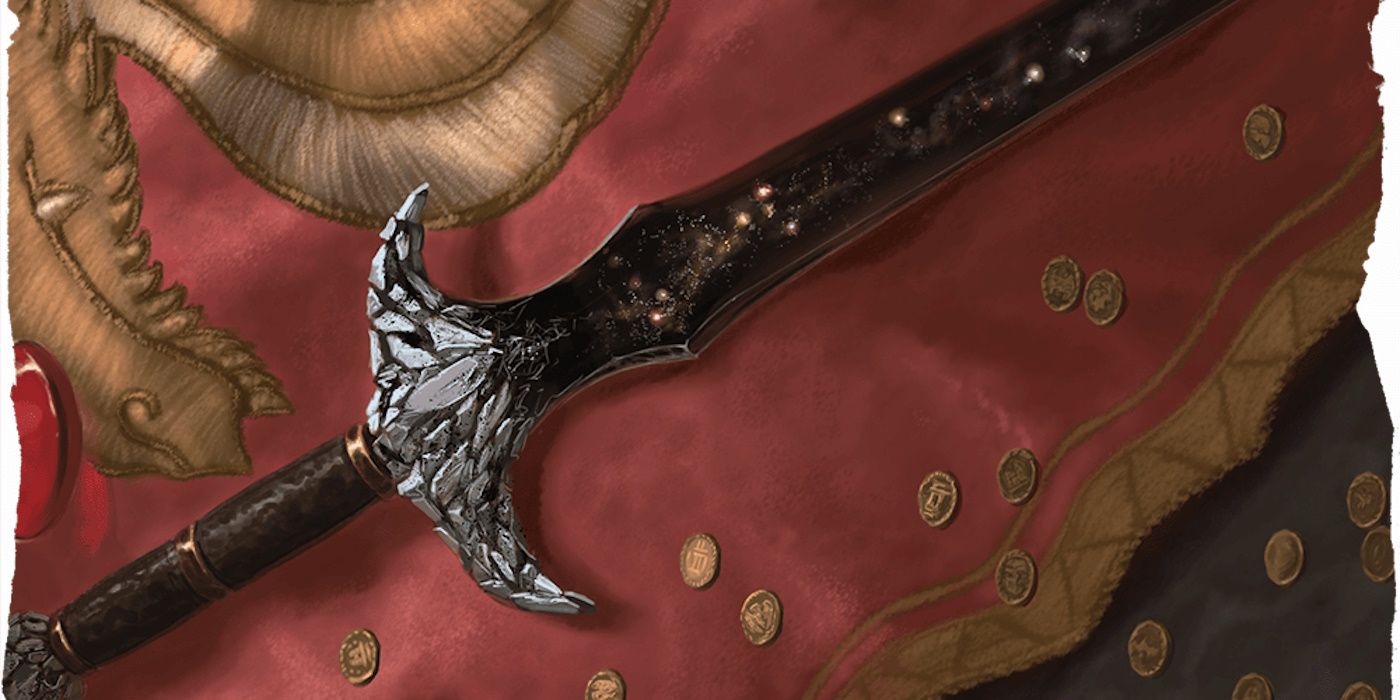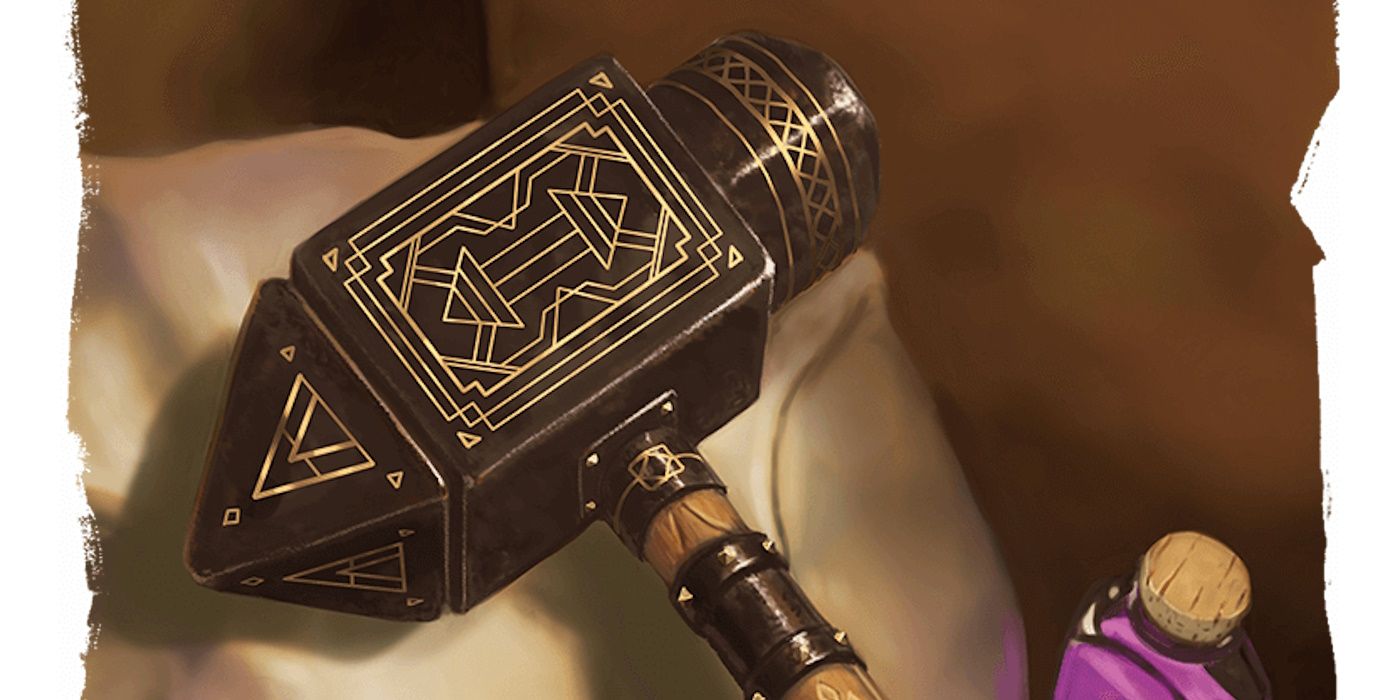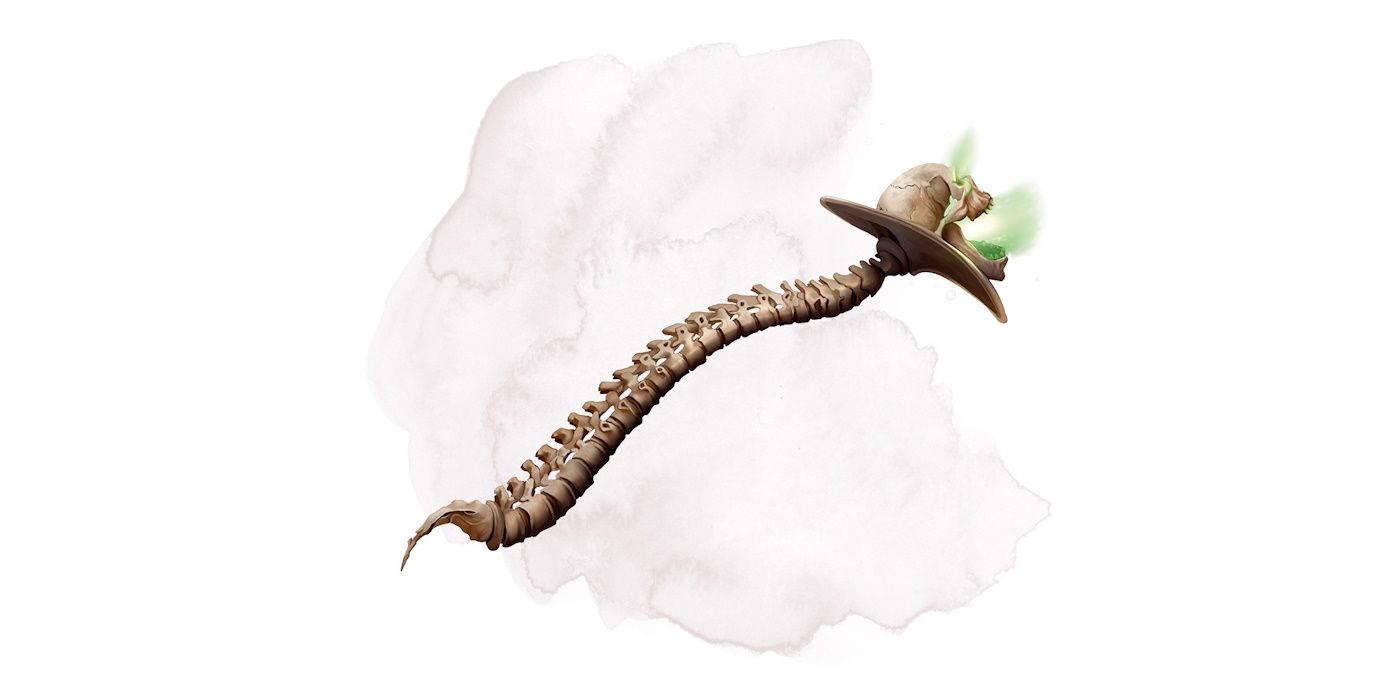When a Dungeons & Dragons player picks up a new magic item, the last thing they might expect is for it to start talking to them. As well as having cool features and buffs, these sentient items can also add an extra level of chaos to any campaign. With each having unique personalities brought to life by the DM, players will never be quite sure what they’re in for when meeting a sentient magic item.
Sentient magic items have been a part of DnD from its earliest days. The Dungeon Master’s Guide even has an entire section dedicated to these quirky items to help DMs incorporate them into their games. Of course, what makes sentient items interesting is their personalities, which can help or hinder the hapless player who decides to attune to them.
7 Moonblade
There have been countless moonblades throughout elven history in DnD, as each moonblade was linked to a particular elven bloodline and passed down through families. As such, the Moonblade found in fifth edition can only be attuned to by an elf or half-elf character. The Moonblade functions like a normal +1 longsword, but for each rune on its blade, another property is added. DMs can decide how many runes there are by rolling 1d6+2, but there are typically at least two granting bonuses, such as acting as a Ring of Spell Storing, dealing extra damage, or scoring critical hits on 19 or 20.
The Moonblade doesn’t communicate with the attuned character with words, only emotions, which can make some fantastic DnD roleplay opportunities. As a neutral good weapon, the Moonblade wants to further elvenkind and once it has bonded with a new owner, it is fiercely loyal to them. However, the Moonalbde is also very overconfident in its own judgment, and once it has chosen the character, it will believe that only they should even be allowed to wield it.
6 Shield Of The Hidden Lord
Discovered as part of Baldur’s Gate: Descent into Avernus, the Shield of the Hidden Lord is a curious DnD magic item. As well as providing the player with +2 to AC, the shield also has three charges which can be used to cast fireball and wall of fire. Curiously enough, the Shield of the Hidden Lord can also choose to radiate an aura of dread at any time during combat, hinting at the item’s true nature.
When first attuned to, the Shield of the Hidden Lord will hint that it is a trapped angel, but this is not the case. The shield is really a prison for the pit fiend Gargauth who will subtly try to influence the player to commit horrible acts hoping to get them sent to the Hells. While Gargauth can be a cruel traveling companion, he can’t escape the shield meaning he can provide many interesting or even amusing roleplay moments for the whole DnD party.
5 Ring Of Winter
The Ring of Winter features in Tomb of Annihilation, where it is in the possession of the famed adventurer Artus Cimber. It shields the wearer from divination magic, prevents them from aging, grants immunity to cold damage, and has a host of spells that can be cast through it, such as cone of cold, sleet storm and wall of ice.
However, any character attuned to the Ring of Winter will also quickly learn that it is not only sentient, but evil – very evil. As a chaotic evil being, the ring loves nothing more than causing as much destruction and harm as possible. DnD characters wearing the ring will have to contend with it whispering in their heads as it urges them to commit terrible acts in the hopes of freezing their hearts.
4 Azuredge
Found in Waterdeep: Dragon Heist, Azuredge is a legendary battleaxe that is a little picky about who can wield it. As a weapon, Azuredge gives a +3 to attack and damage rolls and can even slice through the shield spell. The battleaxe has three charges which can be used to hurl it at enemies and then return to the wielder’s hand.
Azuredge’s personality is where the fun begins, as the lawful neutral weapon only wants another law-abiding entity to wield it, and who will swear to protect the DnD city of Waterdeep. Azuredge takes its mission to protect the city very seriously, and if a person tries to use it without its permission, it uses magic to make itself ten times heavier. This can obviously cause many hilarious situations for players, with Azuredge refusing to move if it and the character in possession of it have a falling out.
3 Blackrazor
Based on the Blackrazor found in the DnD first edition campaign White Plume Mountain, the fifth edition Blackrazor is a +3 greatsword that can be put into any campaign. The sword has some pretty dark powers, as its main purpose is to consume the souls of creatures it slays. This grants the player attuned to it temporary hit points and advantage on attack rolls, saving throws and ability checks. Blackrazor can also cast haste on its own and prevents its wielder from being charmed or frightened.
Despite its dark nature Blackrazor isn’t an evil weapon and has a chaotic neutral alignment. What makes the greatsword a fun sentient weapon is its personality, as it is quite demanding and used to being obeyed. In the game, Blackrazor will quite bluntly command the DnD player wielding it to feed it souls or else face its wrath.
2 Whelm
Also from first edition’s White Plume Mountain is Whelm, a sentient warhammer that can also be attuned to by a dwarven DnD character. As a +3 warhammer, Whelm has some great features, such as being used as a thrown weapon that returns to the player character like Thor’s Mjölnir, sending out shockwaves to stun enemies and casting the spells locate object and detect evil and good. However, Whelm has some downsides that complement its forceful personality.
At the start of each day, after using Whelm for the first time, the DnD character attuned to it will develop an intense fear of being outdoors, which will impose disadvantage on attack rolls, saving throws, and ability checks. This comes from Whelm’s links to the dwarves, as the warhammer wants nothing more than to protect dwarves against all their enemies. The lawful neutral weapon also has a secret shame linked to one of its past masters, and it will take a loyal and trusted player character to get Whelm to open up.
1 Wand Of Orcus
As the name suggests, the Wand of Orcus was created by the infamous demon prince, and as such, is a wonderfully evil sentient DnD item. The wand provides some great bonuses, including a +3 to attack and damage, +3 to AC, and conjuring skeletons and zombies. The wand also has some great spells such as blight, speak with dead, and the incredibly powerful power word kill.
However, as it is a wand made by an extremely evil demon, the Wand of Orcus also has some pretty evil desires. The wand will urge the player to snuff out life by making grand promises that it has no intention to keep. Should any DM give their players the Wand of Orcus during a Dungeons & Dragons campaign, then they are bound to have tons of fun roleplaying this cold and cruel sentient item.













































